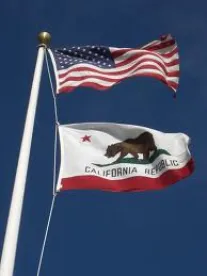In my very limited encounters with the late Harold Marsh Jr., I recall that he didn’t readily embrace proposed “fixes” to the Corporations Code. As I too get older, I’ve come to appreciate his perspective. For example, Governor Brown just signed SB 538 (Hill), a bill that fundamentally changes California’s securities fraud statute.
Among other things, SB 538 rewrites Corporations Code Section 25401 as follows:
a) Employ a devise, scheme, or artifice to defraud.
It is(b)unlawful for any person to offer or sell a security in this state or buy or offer to buy a security in this state by means of any written or oral communication which includesMake an untrue statement ofamaterial fact oromitsomit to state a material fact necessaryin orderto make the statements made, inthelight of the circumstances under which they were made, not misleading.(c) Engage in an act, practice, or course of business that operates or would operate as a fraud or deceit upon another person.
Now, some may say “isn’t this just conforming California law to Rule 10b-5?”. The answer is yes. So, why am I troubled?
The SEC adopted Rule 10b-5 to impose liability on purchasers as well as sellers of securities. As enacted, Section 25401 took care of this problem by referring to persons who buy or offer to buy. Thus, there was no need to change the statute to address that problem. In the seventy plus years since its delivery, Rule 10b-5 has expanded to cover a multitude of transgressions undreamt of at its birth, including insider trading. California, however, doesn’t need to amend Section 25401 to impose liability on insider trading because California already has a statute, Corporations Code Section 25402, that declares insider trading to be unlawful. See Insider Trading California Style.
My biggest concern is that by suddenly rewriting California’s law, the legislature has created tremendous uncertainty. For example, liability under Rule 10b-5 requires scienter, “a mental state embracing intent to deceive, manipulate, or defraud.” Ernst & Ernst v. Hochfelder, 425 U.S. 185, 193 n.12 (1976). However, neither Section 25401 before amendment nor Section 25501 (which imposes liability for violations of Section 25401) requires that the plaintiff allege or prove scienter (Section 25501 does provide a “reasonable care” defense). Has the legislature inadvertently increased the fault required of defendants by adopting the federal rule? Apparently, the legislature didn’t recognize that Section 25501 was based on Section 12(a)(2) of the Securities Act of 1933 while Rule 10b-5 was adopted under Section 10(b) of the Securities Exchange Act of 1934. In fact, Professor Marsh criticized Rule 10b-5, stating that the “Rule has threatened to disrupt, if not to destroy completely, the scheme of liability established by Congress in the 1933 Act.” H. Marsh Jr. and R. Volk, Practice Under the California Securities Laws § 14.01[2][e].
It will probably be a very long time until the courts will untangle the Gordian knot tied by the legislature when it enacted SB 538.
Disclosure note to readers: I serve as a practice consultant to Practice Under the California Securities Laws.



 />i
/>i

